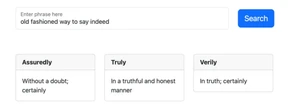Ditch the trust falls and awkward rope courses, because traditional team-building activities can feel forced and, well, a bit cheesy. But building a strong, collaborative team is crucial for success. So, how do you create a memorable experience that actually fosters communication, problem-solving, and camaraderie?
In the quest for stronger team dynamics, we’ve gathered 10 unique perspectives from professionals across industries, from talent acquisition managers to COOs who shared their unconventional team-building activities to try to get your team working together in surprising and engaging ways. From breaking down barriers with karaoke to hosting science fiction hackathons, get ready to unleash your team’s hidden talents and forge lasting bonds through inspiration and a touch of friendly competition.
“Red dotting”
In our weekly team stand-up meetings, we implemented a process called “red dotting.”
When you enter a mall, an airport, or any facility that’s challenging to navigate, there is usually a map in the central location or entryway. That map almost always has a red dot that reads “You are here.”
Well, the red dot process in our stand-ups was just a super brief statement of “where we were” that day, emotionally speaking. Examples are “I’m excited about ______,” or “I’m a little frustrated by ________,” or “My kid had me up all night; I’m exhausted.”
These are one-way statements and cannot be challenged or questioned. The point of the exercise is to quickly understand where each of your team members is emotionally/psychologically so that you might be a better teammate and/or set them up for success.
It might explain why one person isn’t talkative that day, so you don’t take offense to their short answers. It might mean that you jump in and help them with a task because they are in the weeds or exhausted. This easy exercise creates a deeper connection through communication, which enhances the ability for team collaboration. And it takes just a couple of minutes.
Rain Bennett, filmmaker, author, and storytelling coach, RainBennett.com
Reflective sharing
After completing the final stages of development—reflecting Bruce Tuckman’s stages of group development: forming, storming, norming, performing, and adjourning—we arranged a team-building activity. This unconventional event focused on celebrating our milestones and strengthening bonds.
During this activity, we encouraged everyone to share their initial impressions of each team member and how those impressions transformed. This exercise promoted honesty and transparency within the team, leading to deeper bonds and increased trust. Additionally, we had humorous moments as we remembered our first interactions.
I also discussed how I initially hesitated but ultimately embraced stepping out of my comfort zone, highlighting how this experience positively influenced my perceptions of others. This initiative helped us strengthen our team dynamics and inspired us to approach our work more innovatively and creatively. Also, it brought us closer together and encouraged a culture of transparency and honesty, leading to a more cohesive environment.
Kirill Chabanov, COO and operations manager, Aqua Cloud
Illustrating personal journeys
One unconventional team-building activity we did was set up a digital whiteboard where everyone freely illustrated their life story, career path, and interests (with music playing, of course).
It was a creative way for our nimble design studio team to express ourselves authentically and really get to know each other. The activity built stronger connections, trust, and understanding of everyone’s unique journey in an organic way.
Hannah Ryu, cofounder and director of Strategy and Operations, Oak Theory
Parodies of famous movies
I once had a boss who was really into using showmanship to motivate the sales force. This included him and the leadership team acting out parodies of famous movies with scripts relevant to our business. These could be anything from a skit covering one scene up to a lengthy production.
Creating these videos at high quality was a serious effort; it wasn’t like one take filmed on a phone and you’re done. I’m talking about professional equipment, props, costumes, site selection, and negotiation, soundtracks, reshoots, editing: the whole gamut.
For those of us on the leadership team who put in the grueling work to make these productions a success, it created incredible camaraderie and some of my best team-building memories. For the sales force, seeing their leaders go through so much effort (and embarrassing themselves repeatedly) to make them laugh was a huge win. You need to show your people that while you’re serious about business, you don’t take yourself too seriously.
Nick Gausling, managing director, Romy Group LLC
“Mystery dinner”
Our team tried out an activity called “Mystery dinner.” Each team member received an envelope with a character description and a role to play for a dinner set in a mysterious storyline.
The catch was that no one knew the plot in advance, and clues were revealed throughout the dinner. This activity required creativity and spontaneous collaboration, making it a fun and engaging way to develop interpersonal relationships and communication skills.
It was successful because it allowed team members to see each other in a different light and work together in new, unexpected ways.
Roman Zrazhevskiy, founder and CEO, MIRA Safety
“Highlight/Lowlight” exercise
One team I led had recently been formed, and the team members didn’t know each other well. While there weren’t any real issues with how we operated, I knew that a stronger team dynamic was possible, and both the quality of our work and each person’s fulfillment from their work would be better if we operated as a higher-performing team.
In one weekly team meeting, I proposed we start the meeting by playing “highlight/lowlight,” where each team member shared one highlight of their prior week and one lowlight. They could be from their work lives or their personal lives; I just asked that they share genuine experiences from the week before.
The team was very skeptical and had no real interest in trying this idea. I asked the team to humor me for a few weeks and start every team meeting this way. If after a month everyone still thought it was a terrible idea, we’d stop doing it. The first week was awkward, and no one felt like it was a good use of their time. By the second or third week, some teammates raised great things that had happened in the past week, and others joined in congratulating them. Other team members shared lowlights of their week, and many teammates realized they had no idea that their teammate was having a tough time. The exercise built empathy and understanding surprisingly quickly.
After a month, true to my word, I asked the team if we should stop doing the “highlight/lowlight” exercise every week. No one wanted to stop. It became a favorite beginning to our team meetings, and the language of “highlight/lowlight” was picked up in other conversations. When someone was having a rough day, another teammate might offer, “This sounds like a lowlight. How can I help?” Other weeks when everything was running smoothly, the team would talk about which one of them was going to have the best “highlight” of the week.
There were a few things that made this team-building activity successful. First, it’s easiest to do this exercise with a relatively small team. Second, the team was willing to try something different that was uncomfortable at the start and keep doing it for a while. That wouldn’t have been possible if my team didn’t have some trust in me to begin with. Third, team members really did enjoy getting to know each other better, and the “highlight/lowlight” activity made it easier for them to connect outside of our team meetings. Years later, I’ve heard from members of that team how fondly they look back on the exercise.
Meghan Anzelc, Ph.D., president, chief data and analytics officer, Three Arc Advisory
Science fiction hackathon
One unique team-building activity that had an unusually positive effect on our team was the Science Fiction Hackathon. This activity aimed to have teams brainstorm and prototype futuristic solutions that could address real-world issues. It was less about implementing these ideas in their entirety and more about thinking differently, outside our comfort zones.
Each team member was immersed in the activity; they delved deep into their creative reserves to ideate futuristic solutions. Collaboration was natural in an environment that welcomed wild ideas.
It was the sheer novelty of the idea, combined with the cloak of a fun, challenge-driven environment, that made it a success. This hackathon forced everyone to abandon typical constraints and think beyond the present, a feat inspiring enough to bond individuals. The shared purpose fueled a climate of mutual respect, understanding, and unity.
Cesar Cobo, COO, Webris
Karaoke
Thinking back on a fun and unexpectedly impactful team-building activity, karaoke definitely stands out. We didn’t know what to expect when it was first suggested, but it was a huge hit. Instead of just a few brave souls stepping up, everyone got into it and had a blast.
What made karaoke so successful was the way it brought everyone together in a relaxed and enjoyable atmosphere. It broke down barriers, removed titles, and let people connect in a way that’s hard to replicate in a typical team-building exercise.
Plus, it was just plain fun! Seeing everyone let loose and have a good time showed us the power of mixing things up and trying something different. So now, whenever we get the chance, we’re definitely bringing out the karaoke machine.
Tamara Spasojevic, talent acquisition manager, CAKE.com
Inviting Olympic athletes to the town hall
At PolicyMe, we’re a remote-first company, meaning that we are always looking for unique ways to create connections at a distance. Inviting Olympic athletes to lead interactive movement exercises during our 2023 town hall meetings was a unique way to do just this. These five-minute opening sessions, led by inspiring athletes like Micha Powell, cultivated a shared sense of enthusiasm and connection, setting the tone for our discussions.
They were so successful, that we even brought Micha in for a 1-hour in-person session at the start of 2024 to deep-dive on her expertise so that our team could learn about how to perform at an Olympic-athlete level. The key takeaway: Offer employees unique, memorable experiences that they couldn’t access alone. This is what helps build meaningful memories and strong connections.
Vanesa Cotlar, VP of People and Culture, PolicyMe
Organic interactions
The best team-building activities are the ones that happen naturally alongside work when there is a feeling of psychological safety and space. For example, when team members are sent to a client visit in another city and manage to get lost navigating the new environment, and have to find their way back together.
Another example, someone sends a funny video to the team group chat, and the rest of the team quotes it like a workplace inside joke. Or you realize you have a shared interest with a coworker and feel comfortable chatting with them about it or even arranging to go out together to enjoy it outside of work as friends.
These are the types of intangible things that gel a team together, and the tricky bit is that they aren’t really something that can or should be organized. It’s something that grows organically when people are working in an environment of mutual respect and trust. If you foster an environment like that for your team, it’s going to be worth a thousand times more than some cheesy icebreaker exercises or putting a ping-pong table in the break room.
Shannon Listopad, owner and founder, November Consulting








No comments